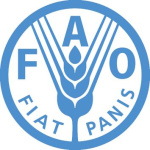- Industry: Agriculture
- Number of terms: 87409
- Number of blossaries: 0
- Company Profile:
Established in October 1945 with the objective of eliminating hunger and improving nutrition and standards of living by increasing agricultural productivity, FAO coordinates the efforts of governments and technical agencies in programs for developing agriculture, forestry, fisheries, and land and ...
That portion of the DNA in plant and animal cells consisting of highly repetitious sequences (millions of copies) typically in the range from 5 to 500 bases. Thousands of copies occur tandemly (end-on-end) at each of many sites. It can be isolated from the rest of the DNA by density gradient centrifugation.
Industry:Biotechnology
The (name of the) first mammal to be created by cloning a cell from an adult animal. In this particular case, the cell came from the mammary tissue of an adult ewe. The creation of Dolly showed that the process of differentiation into adult tissue is not, as previously thought, irreversible. The result was achieved by nuclear transfer (q.v.). Dolly's birth was announced in 1997. Since then, cattle and mice have also been cloned from adult cells.
Industry:Biotechnology
The <i>in vitro</i> addition of the same nucleotide by the enzyme terminal transferase, to the 3´-hydroxyl ends of a duplex DNA molecule. a.k.a. homopolymeric trailing.
Industry:Biotechnology
The <i>in vitro</i> culture and germination of pollen grains. Callus cultures thus obtained will form shoots or embryoids which develop into monoploid plants.
Industry:Biotechnology
The <i>in vitro</i> growth of cells derived from multi-cellular organisms. The cells are usually of one type.
Industry:Biotechnology
The <i>in vivo</i> treatment of a genetic disease by blocking translation of a protein with a DNA or an RNA sequence that is complementary to a specific mRNA.
Industry:Biotechnology
The 12-base, single-strand, complementary extensions of bacteriophage lambda (λ) DNA. a.k.a. cos sites.
Industry:Biotechnology
The 5´-terminal methylated guanine nucleoside that is present on many eukaryotic mRNAs; it is joined, after transcription, to the mRNA.
Industry:Biotechnology
The ability of a micro-organism to produce a protein that disables an antibiotic or prevents transport of the antibiotic into the cell.
Industry:Biotechnology
The ability of a plant to withstand herbicide. Herbicide resistance has been one of the early targets of plant genetic engineering. If a herbicide is sprayed onto a field planted with such resistant crops, then all the plants except the crop would be killed, thus providing an effective method of weed control without having to develop herbicides specific to each weed type. There is substantial concern in some quarters about the widespread use of this technology, which is essentially giving the plant kingdom the ability to evade man's most effective herbicides. The concern are that, firstly, such engineering will lead to increased use of the herbicides, at a time when it is generally accepted that the use of chemicals should be kept as low as possible, and that, secondly, there is the possibility that resistant crop plants will escape to become weeds, or that their resistant genes could be transferred to other species, including weeds.
Industry:Biotechnology
